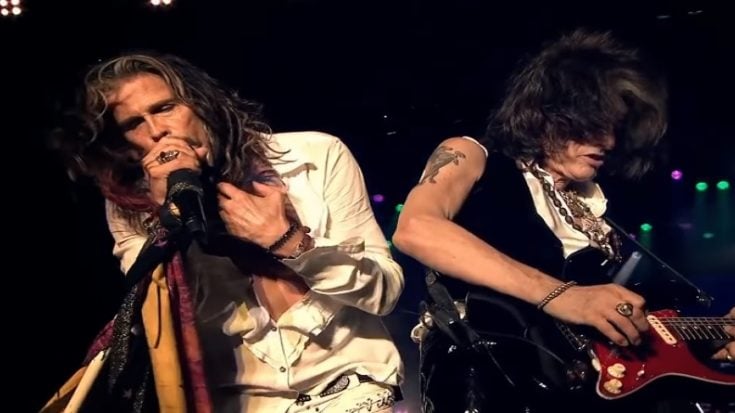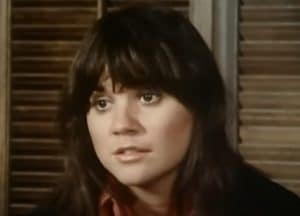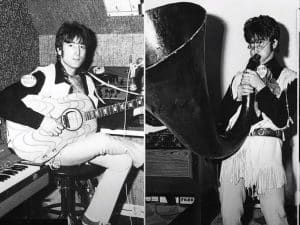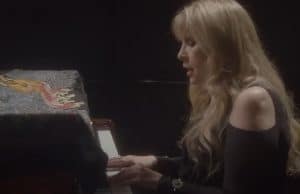Rock and Roll’s Biggest Fan Clubs And Their Iconic Names

Aerosmith - elton batista / YouTube
Being a fan of a band extends beyond merely enjoying the music and attending concerts; it encompasses a profound sense of camaraderie, shared among thousands of individuals united in their support for their favorite artists.
Several rock bands have cultivated dedicated followings that span generations, with the love for their music often passed down from parents or older siblings, creating a legacy of fans.
In some instances, these fan bases have gained notoriety nearly as significant as the bands themselves. Such examples are the fans of The Beatles and Grateful Dead, who have throngs of fans steeped in history.
These are two of the best-known examples of named fan bases, but there’s plenty more in the world of rock. Below, we’re taking a look at rock and roll’s biggest fan clubs and their iconic names.
Sammy Hagar’s Redheads
Sammy Hagar’s fans, affectionately known as “Redheads,” pay homage to the iconic singer’s fiery red locks. Beyond a mere reference to hair color, this nickname symbolizes a shared identity and passion for Hagar’s music, creating a vibrant community bound by the unmistakable spirit of the Red Rocker. The term is not just about the exterior; it’s a collective celebration of the dynamic energy and enduring legacy that Sammy Hagar brings to the world of rock.
“The Red Rocker,” a nickname synonymous with Sammy Hagar, encapsulates his fiery red hair and the electrifying presence he brings to the stage. Adopted by fans, this moniker goes beyond a mere label—it signifies allegiance to a rock legend and a shared appreciation for a music career that created an unmistakable place in rock.
Motörhead’s Motorheadbangers
Once the official fan club for rock legends Motörhead, Motorheadbangers lives on as a term embraced by fans who continue to headbang to the relentless beats of Motörhead’s iconic music. Despite the closure of the official club following the passing of Lemmy Kilmister and the band’s challenges, the term remains a vibrant symbol of the enduring passion and dedication that fans have for Motörhead.
Motörheadbangers, much like the band itself, perseveres through the test of time. As Motörhead continues to echo in the hearts of fans worldwide, the fan club, though evolving from its early days, mirrors the band’s resilience.
Rush’s Rats
Once embraced by Rush enthusiasts, the term “Rats” affectionately symbolized the acute pursuit of all things Rush-related among fans. This playful nickname reflected a shared craving for “pellets”, which encompassed anything connected to the legendary Canadian rock band.
Comprising over 400 devoted members, Rats maintain a strong connection through their shared love for the band. The craving for Rush-related “pellets” binds them together, and their interactions extend beyond the virtual realm, with some participating in the annual RatCon party. Additionally, Rats organize pre-party gatherings in their respective cities, fostering a sense of camaraderie as they come together to celebrate the timeless music of Rush.
Neil Young’s Rusties
The name “Rusties” for Neil Young’s fan community originates from his 1979 album, Rust Never Sleeps, with some tribute bands adopting the same title. This ‘Rust’ moniker was also used by another Neil Young community, simply called RUST.
RUST is the largest and longest-standing Neil Young fan community online, and boasts over 25 years of global “Rustification”. Originating in 1992 as an email “listserv” group under a Rustie named Dan Farmer, RUST later transitioned through various email list servers before moving to a Yahoo group in the early 2000s and a well-known Facebook fan page called “Rusties on Facebook”.
Megadeth’s Droogies
The precise reason remains unclear, but for years, Megadeth founder Dave Mustaine has playfully dubbed Megadeth fans as “Droogies”, a term rooted in the 1971 film A Clockwork Orange.
Mustaine explained that the term originated from the movie, where it signifies a close-knit group, akin to their own little gang. A Clockwork Orange, based on Anthony Burgess’s 1962 novel, utilized the term “droog” to denote a friend. So, when Mustaine addresses Megadeth fans as “Droogies”, it’s a warm acknowledgment, akin to calling them friends in the distinctive language of camaraderie inspired by the novel and film.
https://twitter.com/Mako78/status/1723519153678553115
Aerosmith’s Blue Army
The term “Blue Army” holds a dual significance within the realm of Aerosmith fandom. Firstly, it pays homage to the blue-collar demographic that forms a significant part of the band’s fan base. Additionally, it draws inspiration from the attire donned by concert-goers during the ’70s — a sea of blue jeans and denim jackets.
While the official fan club goes by the name Aero Force One, the nickname “Blue Army” resonates as a lesser-known but endearing term among Aerosmith enthusiasts. Guitarist Joe Perry revealed in a mid-’70s interview that he coined the name, describing the audience as a “sea of blue” due to the prevalent denim fashion at the time.
KISS’ KISS Army
The term “KISS Army” not only serves as the official fan club name for the legendary rock band KISS but has also become an endearing nickname for the band’s devoted followers. Originating unofficially in 1975, two passionate KISS fans, Bill Starkey and Jay Evans, coined the term to create a sense of camaraderie among fellow enthusiasts.
The duo went beyond mere fandom, producing bootleg tapes and crafting their own T-shirts adorned with the band’s logo to spread awareness during their high school years. Disliking the formal connotation of “fan club”, they preferred the militaristic touch of “KISS Army” and actively campaigned for the band’s exposure on local radio stations. Their grassroots efforts caught the band’s attention, leading to a growing fanbase that eventually prompted KISS to acknowledge and embrace the “KISS Army”.
Jimmy Buffett’s Parrotheads
The term “Parrothead” is synonymous with the legendary Jimmy Buffett, signifying a devoted fan of his music and the laid-back lifestyle he sings about. Over the decades, the identity of a Parrothead has evolved to represent a love for the carefree lifestyle depicted in Buffett’s music—a desire to unwind with good music, good friends, and good drinks while letting the world go by.
The origin of the term dates back to the summer of 1985 during a concert in Ohio. Timothy B. Schmit, a member of the Coral Reefer Band at the time, noticed the audience adorned in tropical attire with inflatable parrots on their heads. Playfully distinguishing them from the popular “dead heads”, Schmit coined the term “parrot heads,” a name that resonated and stuck with Buffett’s devoted followers.
Grateful Dead’s Deadheads
The Grateful Dead boasts a fanbase known as “Deadheads”, a term that made its debut on the sleeve of the band’s second live album, Grateful Dead. The album’s sleeve featured an invitation to “DEAD FREAKS UNITE”, encouraging fans to share their whereabouts and stay connected by sending their information to Dead Heads, P.O. Box 1065, San Rafael, California 94901. This gave birth to the Dead Heads newsletter.
Renowned rock writer Robert Christgau was the first to observe and document in the press the dedicated nature of the band’s followers, noting how many fans traveled extensively to attend Grateful Dead performances. He highlighted their commitment to catching as many shows as possible and their habit of comparing notes. This widespread attendance led the band to regularly change their setlists, ensuring that each concert offered a unique and distinct experience for the devoted Deadheads.
The Beatle’s Beatlemaniacs
This list would not be complete without the Beatlemaniacs, which became a phenomenon that is often credited with pioneering the concept of super fandom emerging as an intense and passionate fanbase during the Fab Four’s heyday.
Coined to capture the fervor that accompanied the band’s rise to stardom, the term “Beatlemania” was attributed to various sources, including music promoter Andi Lothian, who witnessed the phenomenon firsthand in Scotland in 1963. This fervent admiration, particularly prominent among female fans, led to the nickname “Beatlemaniacs”, encapsulating the almost maniacal devotion these fans exhibited, as vividly portrayed in historical photographs.
The Beatles not only transformed the landscape of music but also redefined what it meant to be a fan. Beatlemaniacs, characterized by their unwavering allegiance to the Fab Four, became a captivating phenomenon in their own right throughout the ’60s.











